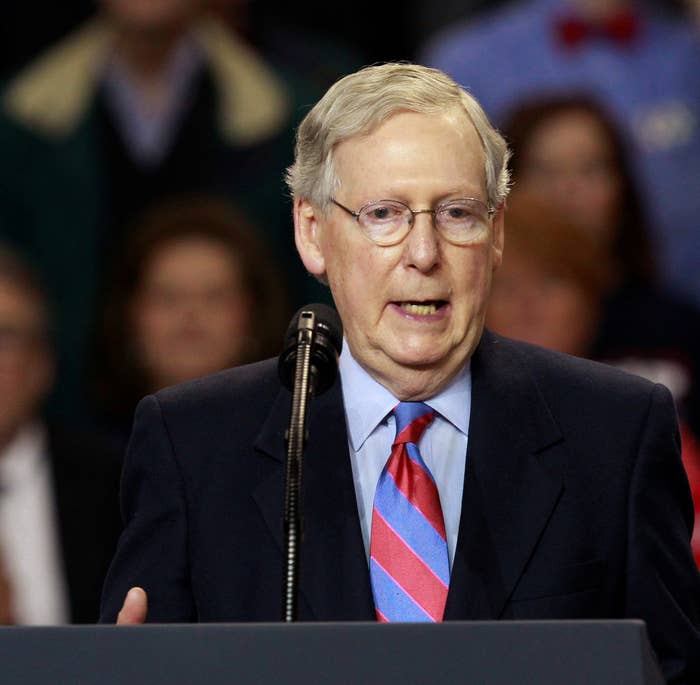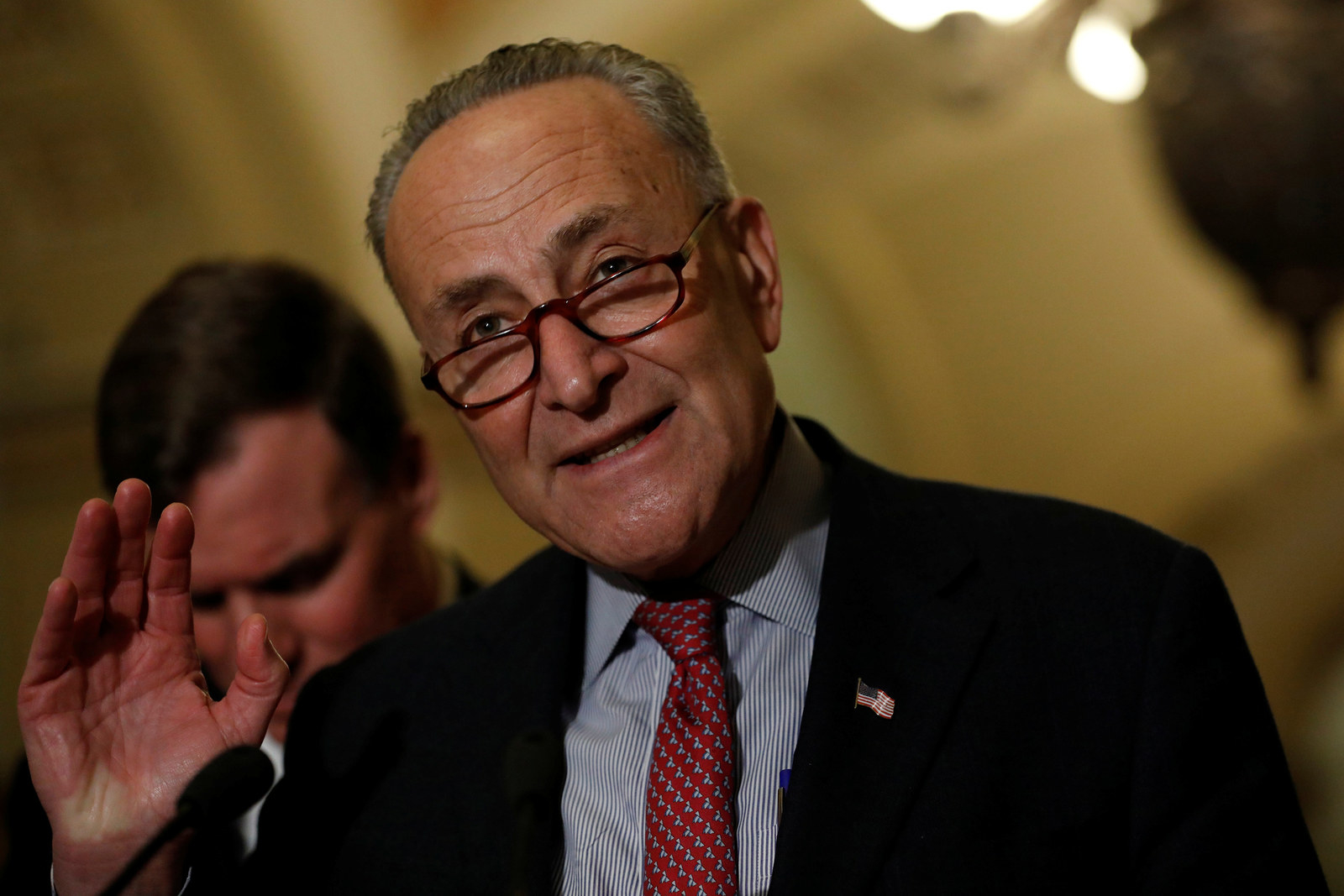
WASHINGTON — At 10 a.m. next Monday, the Senate Judiciary Committee is slated to consider the nomination of Judge Neil Gorsuch for the vacancy on the US Supreme Court.
By the end of the week, President Donald Trump’s pick will be confirmed as the next justice of the Supreme Court, Senate Majority Leader Mitch McConnell told reporters Tuesday.
How (and whether) the nomination will get from Point A to Point B, however, is up for debate — given that the top Democrat in the Senate, Minority Leader Chuck Schumer, already has said that Democrats will try to filibuster the nomination. Without the needed bipartisan support, Republicans could invoke the so-called “nuclear option” in response, a move to allow Gorsuch’s confirmation on a simple majority vote, bypassing Democrats altogether. But that’s not their only option.
So, what’s going to happen?
On April 3, the Judiciary Committee — controlled 11-9 by Republicans — will vote Gorsuch’s nomination out of committee with a favorable recommendation. (Although Democrats could boycott a committee vote, as they have on some of President Trump’s cabinet nominees this year, Republicans have effectively shut down those attempts with the committees allowing votes to proceed regardless of Democrats’ attendance and could do so again. What’s more, Democrats have not suggested they plan to take that path here.)
Next up — likely Monday night, but almost definitely by Tuesday morning — McConnell would place the nomination on the Executive Calendar, which means debate on the nomination can begin on the Senate floor.
Beyond that, what happens could get complicated.
The next likely move for McConnell would be to file a cloture petition — a move to limit debate on an issue. The move effectively requires Democrats to get enough support to shut Gorsuch down or allow a vote to let him through.
Under Senate rules, a cloture vote comes two days after the filing of a cloture petition. If cloture is invoked — which requires 60 votes — the debate is limited and Gorsuch’s nomination would be voted on after 30 hours of debate.
McConnell said Tuesday that there will be an “opportunity” for Democrats to help provide the needed votes to invoke cloture. (Because there are only 52 Republicans in the Senate, it would take support from at least 8 Democrats to invoke cloture and allow a final vote.)
Given Schumer’s position on the issue, the reverse question — Can Democrats stop cloture from being invoked? — will be the first real challenge of the week. Democrats — who have 48 votes in the Senate, including two independents — will need to vote together to sustain the filibuster and delay the nomination. Republicans currently need seven more Democrats to join them in moving the nomination forward because, as of now, Sen. Joe Manchin of West Virginia is the only Democrat who has said he will not support a filibuster and will vote with Republicans for cloture.
What happens if Democrats have the votes to sustain a filibuster?
If the Democrats pull off “the first partisan filibuster” of a Supreme Court nominee — as McConnell’s team has been preemptively accusing the Democrats of doing — McConnell could keep bringing Gorsuch’s nomination up for successive cloture votes over and over again. (McConnell did just that in 2015 with a human trafficking bill that included a major anti-abortion provision). Unless there’s a reason to think the vote count would change, however, the aim this time around — getting Gorsuch on the court — makes this move less than optimal.

If not that, the next — and most discussed possibility — is the so-called “nuclear option,” which would essentially make Democratic opposition null and void, while leading to bigger consequences for both parties moving forward.
In 2013, the Democrats — under then-Majority Leader Harry Reid’s leadership — invoked the nuclear option for lower court nominees and other presidential nominees, but Reid specifically left out nominees to the Supreme Court. Essentially, that means the Senate got rid of the 60-vote threshold for cloture for those nominees and made it a simple majority. The move, at the time, was an effort to push through several Obama nominees to a federal appeals court.
The move this time, which would also need to be approved by a simple majority of the Senate, is to apply the same ruling for purposes of Supreme Court nominations as well. If successful, Republicans would then have enough votes on their own to confirm Gorsuch.
A majority vote to change the rule, however, could be tough for the Republicans — setting up the second real challenge of the week. Republicans could only lose two votes — which would lead to a 50-50 tie, which could be broken by Vice President Mike Pence — on a measure that many Republicans have previously expressed opposition to and that some, like Sen. Bob Corker, are even now openly expressing concern about.
Why? Because while changing the rules could make it easy to get Gorsuch on the bench, it also would mean that the next time Democrats control both the Senate and the White House, the same rules would apply to them. Schumer has repeatedly said this year that he regrets Democrats’ decision under Reid to change the rules for lower court and cabinet nominees because they could have rejected more of Trump’s cabinet picks if they still had the 60-vote threshold.
Here’s the thing: That’s not McConnell’s only option.
There are at least two other (technically) possible moves.
If McConnell, who is widely regarded as an institutionalist and master of arcane Senate rules, knows that the votes are not there to invoke cloture — or even if a first cloture vote fails — he also could use a procedure that’s been openly pushed by the Heritage Foundation, a conservative outside group, since January. In their terms, it’s “A Rules-Based Strategy for Overcoming Minority Obstruction of a Supreme Court Nomination.”
This would be the use of the technically-there-but-never-apparently-invoked “two-speech rule.” Under the rule, senators are limited to giving two speeches during the course of one legislative day. This rule, then, could be used to — eventually — end debate on the Gorsuch nomination even without invoking cloture. In other words, Republicans could use it to exhaust Democrats and approve of Gorsuch without their votes, bypassing them entirely.
The thing with a “legislative day” is that it is not, necessarily, a day. It could go on for a very long time, so long as the Senate never adjourns for the night. The Senate can, with a simple majority vote, call several days, weeks or months the same “legislative day,” thereby only allowing Democrats to give two speeches each. And any motion, in this case by Democrats, to end the legislative day can be defeated by a mere majority vote of senators present.
Notably, the Heritage Foundation was re-promoting this January report earlier this week — as Democrats’ talk of filibuster has increased. The Heritage Foundation, and The Federalist's Sean Davis, have been promoting the strategy. Heritage, and the (unassociated) conservative lawyers group the Federalist Society, have been credited with influencing Trump's thinking about the Supreme Court.
This procedural move, though, has several downsides for Republicans, as a leadership aide who told BuzzFeed News he was providing a “reality check” on the idea made clear.

If Democrats are willing to go to the wall, they could take up significant time in delaying Gorsuch’s nomination and holding up the Senate from getting to other business. There is no limit on the length of their speeches, as long as they do not yield the floor, sit down or stop speaking. (Think: Mr. Smith Goes To Washington dozens of times over — times two). It would give the Democrats a ton of media coverage, and could prevent the Senate from doing anything else for as long as the effort continues. What’s more, when the two speeches per Democratic senator are done, a senator could try to give a third speech and would have to be ruled out of order — meaning senators would have to vote against a senator speaking. (Think: The drama over shutting down Sen. Elizabeth Warren, but after days or weeks of Democratic speechifying on the nomination.) What’s more, multiple Democrats could try to speak a third time, requiring votes against each senator speaking.
Members of both parties would have to be constantly on call, on days, nights and weekends, to stop the other party from either sneaking Gorsuch through with a final confirmation vote or shutting down his nomination and starting the whole process over by adjourning and ending the legislative day.
Ultimately, when all Democrats who are interested in forcing the issue have had their two speeches, they essentially would be out of options. McConnell could bring up Gorsuch for a clean, simple-majority vote and send him to the Supreme Court.
Speaking of recess.
Finally, we return to an old Washington frenemy: The recess appointment.
If it looks like Democrats are able to sustain a filibuster, and if McConnell thinks invoking the two-speech rule would not be a workable solution, there is one last possibility — the Senate could leave town.
If the Senate recesses as planned at the end of the day on April 7, it is not due to return until April 24. During that time, Trump could give a recess appointment to Gorsuch — putting him on the Supreme Court through the end of the next session of Congress, which would last until late 2018 or very early 2019.
While the Supreme Court ruled against some of President Obama’s recess appointments, current precedent suggests that if the Senate is absent for 10 or more days, a recess appointment likely would be allowed. The upcoming April recess gives Trump that time.
As with the “two-speech rule” option, however, the leadership aide made clear that challenges make this option relatively unappealing as well. Primarily, a recess appointment is not a solution to the vacancy; it is, by definition, temporary.
Additionally, there are ways the Democrats could challenge Republican efforts to recess if they know Trump plans to put Gorsuch on the court through a recess appointment. While Republicans have the votes to go into recess and let Trump put Gorsuch on the bench on his own, Democrats could, for example, require the reading of the journal, a move that would potentially take hours of time as a clerk reads every small detail of the minutes of the Senate’s past day, including the full text of any bills introduced for consideration.
Finally, as Justice Antonin Scalia himself noted in the court’s opinion regarding Obama’s recess appointments, there could — of course — be legal challenges.
All of that leaves us where?
In short, the leaders of both parties in the Senate face a big challenge next week, and all eyes will be on what happens with each hurdle. The bottom line is that the procedure and rules are stacked heavily in Republicans’ favor, and it likely is only a matter of when, not if, Gorsuch is serving on the Supreme Court.
CORRECTION
A story at The Federalist advanced the "two-speech rule" option, and the Federalist Society has been credited with influencing President Trump's Supreme Court thinking. This article initially incorrectly conflated the unrelated publication and organization.



